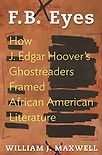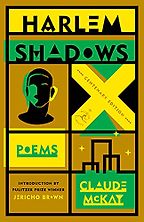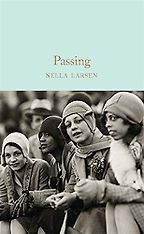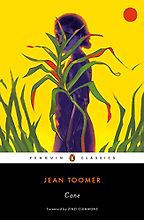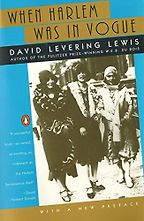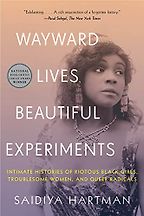Can you tell us about the Harlem Renaissance?
The first thing I should tell you about the Harlem Renaissance is that it actually, knowingly happened. Perhaps not only in Harlem, and not always under that name: it was more often called the Negro or New Negro Renaissance in its own time. But it positively occurred in the minds of those who made it between the Red Summer of 1919 and the depths of the Great Depression in the early 1930s. The Harlem Renaissance took shape as an in-the-moment avant-garde movement, not just a back-formation supplied by later historians to account for the vitality and vogueishness of modern Black art. Like futurism, surrealism, and the rest of the European avant-gardes, the Renaissance was conceived and advertised by a small, self-conscious crowd of artists and intellectuals. From the entrepreneurial old school of W.E.B. Du Bois, Jessie Fauset, and Alain Locke, to the bohemian new school of Helene Johnson, Richard Bruce Nugent, and Wallace Thurman, this crowd sought column inches and social reform while betting on the rise of an unprecedented cohort of Black creators. As they collectively saw it, a whole generation of African Americans, born around 1900 and relatively unscathed by the heritage of racial slavery, was intent on becoming unapologetically Black “New Negroes.” One of the Renaissance’s lasting accomplishments, in fact, was undermining the patronizing expectation that Black literature would proceed one head writer at a time.
But the Harlem Renaissance broke from the European avant-gardes in declining a signature stylistic “ism.” A handful of remarkable Renaissance writing reads something like The Waste Land in its broken, inhospitable imagism. Much more of this writing renders the social changes of Black modernity through realist or romantic lenses, or through what critics have called a “vernacular modernism” drawing on distinctive idioms of Black speech and music. Langston Hughes’s incorporation of the A-A-B blues stanza into his poem “The Weary Blues” comes to mind in this connection. So does Zora Neale Hurston’s lyrical transcription of Southern Black dialect in her novel Their Eyes Were Watching God, its sounds and figures inflecting not only her characters’ dialogue, but her narrator’s governing voice. The Harlem Renaissance was the rare avant-garde movement comfortable with formal variety—not to mention devoted to the backward-glancing historical dynamic of cultural renaissancism. Pledged to the new and the New Negro, Harlem’s modernism all the same tied its forward momentum to the rebirth of a classical past, one located in what could still be glimpsed of African culture before the twin wounds of the Atlantic slave trade and European colonialism. Pan-Africanist anti-imperialism; refurbished Western renaissancism; post-abolitionist anti-racism; modernist avant-gardism: all of these international forces inspired Harlem’s renaissance as much as the resettlement of Manhattan’s growing Black population above Central Park.
That brings us to your first pick, Claude McKay’s poetry collection Harlem Shadows. Can you tell us about it and why you place it first?
Harlem Shadows comes first because it is a book of many firsts. It was the Jamaican-born McKay’s first and only American poetry collection; the first substantial poetic volume, if not the first published book, of the Harlem Renaissance; and more self-indulgently, the first work of McKay’s I fell in love with, the book that sparked my edition of his Complete Poems and later, the first publication of Romance in Marseille—the lost McKay novel I reconstructed with Gary Holcomb. Harlem Shadows would be worth listing here for just one of its ingredients: the influential, often mythologized sonnet “If We Must Die.” Its stately Shakespearian lines, forged in the race riots and labor wars of 1919, were received as the New Negro’s call to arms. “If we must die,” urges McKay’s unfazed and unracialized speaker, “let it not be like hogs / Hunted and penned in an inglorious spot.”
“The Harlem Renaissance was the rare avant-garde movement comfortable with formal variety”
But much of the collection captures McKay at the height of his invention in either prose or poetry. At its ironic best, it transplants enabling rage into the heart of the sonnet form, its fourteen-line formula first among “the older traditions,” McKay rationalized, “adequate for my most lawless and revolutionary passions and moods.” Published in experimental modernism’s wonderful year of 1922, Harlem Shadows dramatizes what became the Renaissance’s contrary habit of reinvesting standard-issue, seemingly white forms with groundbreaking Black content. Less generically, the collection reflects the simultaneous presence of Black Marxism, Caribbean immigration, nostalgic pastoralism, and breakneck urbanization on the Harlem scene. The Pulitzer Prize-winning poet Jericho Brown is not the only recent reader to note that none of McKay’s varied love poems in Harlem Shadows “would have been written if he had not been queer.” Alongside its other firsts, the collection qualifies as early testimony that the Renaissance would be, in the words of Henry Louis Gates, “surely as gay as it was black”—and not “exclusively either of these.”
Next is Nella Larsen’s Passing, which was recently adapted as a film. What’s this novel about?
I chose Nella Larsen’s impressionistic yet mathematically-plotted book of fiction, first published in 1929, for two reasons. First, because it was, as you say, adapted in 2021 as a beautiful black-and-white film by the English director Rebecca Hall. Second, because it’s about the lack of categorical exclusivity, so to speak, that Gates insisted on. With first-wave Freudian intensity, Passing explores the psychology of racial passing, the inner dilemmas light-skinned African Americans faced when crossing the color line separating white from Black. But it distinguishes itself from the surprisingly large sub-genre of passing novels by pushing on passing from dozens of intellectual directions—and this in less than a hundred pages, in the crammed space of a novella effectively passing as a novel.
Why shouldn’t Black-born passers be seen as brave contributors to the tradition of American self-making? (“If one’s the type, all that’s needed is a little nerve.”) Why do some successful passers desire to return to their original racial communities? (“If I knew that, I’d know what race is.”) Despite their racist pretensions, why do white Americans seem easier targets for passing fancies than Black ones? (“Maybe because there are so many more of them, or maybe because they are secure and don’t have to bother.”) Most of all, how is racial passing like and unlike the passing of queer desire for its straight cousin, and vice-versa? Hall’s film, like recent scholarship, wonders if Passing is at bottom a lesbian text passing for a racial one. Beyond Larsen’s deliberate ambiguity on this score, climaxing in a sudden murder mystery compressed into the book’s last pages, Passing forthrightly reveals what we’d now call the intersectional nature of Harlem Renaissance writing. Here and elsewhere, this writing joins racial identities to categories of class and gender and sexuality, region and nation and empire, and so on—categories not always publicized in racially-defined American art.
Your third selection is Cane by Jean Toomer—a text difficult to classify in terms of genre. What can readers expect from this one? How does it compare to the styles found in modernist writings?
As you suggest, readers can expect difficulty—rewarding difficulty, I hope—from Cane. Published just a year after Harlem Shadows, it’s likewise about to celebrate its centennial in the public domain. Of all the books of the Harlem Renaissance, Cane best confirms Richard Poirer’s half-joking dictum that “modernism is what happened when reading got to be grim.” Part of its trickiness stems from Toomer’s blending and quilting of genres. He crafts not just a poetic prose—these are all over modernist literatures—but a poetic prose punctuated and surrounded by a prosaic poetry. There are freestanding poems, some first published elsewhere, sprinkled throughout the first two-thirds of Cane’s fragmentary narrative. They range in design from the existential riddle of “Nullo,” to the anti-lynching blazon of “Portrait in Georgia” (“Hair—braided chestnut, / coiled like a lyncher’s rope”). There are disconnected, also poetic micro-stories, many named after isolated Black women (“Karintha,” “Fern,” “Esther,” “Avey,” etc.), all variations on the theme of the abandonment of a feminized Black South. There is a final closet drama, “Kabnis,” that weds free verse to fiction even as its anti-hero, a brilliant but deracinated Black male artist, fails to marry the violent contradictions of Black folklife. (Any resemblance between this protagonist and Toomer himself is uncoincidental.) The method in Cane’s high modernist madness consists in mapping the Great Migration—the South-to-North exodus that made Harlem a Black mecca—as a patchwork of displacements doomed to bleed beauty. “The folk-spirit was walking in to die on the modern desert,” Toomer explained elsewhere, “That spirit was so beautiful. Its death was so tragic.” Only a shape-shifting modernist text, capable of quick cuts between migratory genres, characters, and landscapes, could do the necessary mourning.
Get the weekly Five Books newsletter
Despite his conclusion that the folk-salvage project of the Harlem Renaissance was over before it started, the Harlem Renaissance couldn’t get enough of Jean Toomer. Nothing close to a bestseller, Cane nevertheless became the best-loved blueprint of the Harlem writers who followed. Like the albums of the Velvet Underground, each of the few hundred copies purchased seemed to produce ten works in tribute. Langston Hughes, for one, raised Cane in the Renaissance’s best-remembered manifesto, “The Negro Artist and the Racial Mountain”: “[E]xcepting the works of Du Bois…, Cane contains the finest prose written by a Negro in America.” Toomer’s book only grew in the estimation of African American writers over the course of the modernist century. When choosing an inscription for Zora Neale Hurston’s refurbished gravestone in 1973, Alice Walker turned not to the Florida muck of Their Eyes Were Watching God, but to the “Georgia Dusk” of Cane. Apart from its poetic pleasures, Toomer’s uncommon text is vital reading for anyone curious about what the Harlem Renaissance most valued, and how its preferences were actively passed down.
Your fourth pick is very different from your first three in that When Harlem Was in Vogue is a historical book. What’s this one about?
David Levering Lewis’s 1981 book is not one of those that proves the Harlem Renaissance’s self-awareness. Instead, it’s an elegant and opinionated intellectual history written with the benefit of half a century of hindsight. For Harlem Renaissance scholars of my generation, second-edition “New Literary Historians” trained in the late 1980s and ’90s, When Harlem Was in Vogue was a common enemy. We resented its charges of New Negro naivete—American racism was no “misunderstanding which forceful prose by honor college graduates could do much to attenuate,” Lewis scoffed—and its implication that all cultural politics was a contradiction in terms. We defined our revisionist takes on the Renaissance against his tight focus on uptown New York society, on the well-connected Black “talented tenth,” and on an average Harlem writer distracted enough to assume “that race relations in the United States were amenable to the assimilationist patterns of a Latin country.” Our studies of the radical origins and cosmopolitan outreach of the Harlem movement bore the negative impression of Lewis’s emphasis on the local and the liberal. Thirty years on, however, it’s easy to see how much of his book we inhaled and admired. Though I can’t stop questioning its narrowing, dismissive thesis, it’s the history I recommend to friends and students seeking a readable introduction to Harlem’s rise as “the Negro Capital of the World.” Lewis remains the least tediously detached writer on the Renaissance ever to have wielded a thick footnote. Only When Harlem Was in Vogue could describe Marcus Garvey’s ideology as a “farrago of Booker Washington and Mussolini,” and only there could this description seem well-founded.
Next is Saidiya Hartman’s Wayward Lives, Beautiful Experiments—your final selection. It’s been lauded for Hartman’s ability to seamlessly weave archival studies with biography. Tell us about this one.
Wayward Lives, Beautiful Experiments, published in 2019, doesn’t couch itself as a book about the Harlem Renaissance. The words “Harlem” and “Renaissance” appear as a pair exactly once in its 441 pages, and it’s been far better recognized for the power of Hartman’s fictional-historical “critical fabulation” than as a rival to When Harlem Was in Vogue. But this intimate feminist record of “social upheaval” still strikes me as the most significant recent work of Harlem Renaissance scholarship. Hartman’s cast of freebooting Black women, rescued from the condescension of posterity through a blend of archival sleuthing and imaginative storytelling, are New Negroes before the fact. In advance of “the queer men and lady lovers and pansies [who] congregated at the Ubangi Club,” years before the “black communists and socialists preaching on Harlem street corners noticed” the city’s working girls, these women’s self-modernizing “reconstruction of intimate life commenced.” Wayward Lives approaches Harlem Renaissance history from the boulevard up, and addresses the question of what the 90 per cent of Black New Yorkers mostly unnoticed by Lewis and company were doing as Harlem prepared for faddishness. Langston Hughes, cynically speaking in the wake of the Great Depression, and gendering his working class as paycheck-to-paycheck male, complained that “[o]rdinary Negroes hadn’t heard of the Negro Renaissance. And if they had, it hadn’t raised their wages any.” By contrast, Hartman submits that ordinary Black women in search of extraordinary lives produced a fitful revolution in consciousness sooner than Cane, Passing, or Harlem Shadows.
With this eclectic bundle of selections, how do you approach anthologized texts on the Harlem Renaissance that many readers may first turn to in order to get an introduction to the period?
At the start of the interview, I tried to stress both the group-mindedness and the stylistic variety of Harlem Renaissance writers, their similarities and differences from the loud-talkers of the modernist avant-gardes. One lasting legacy of this collectivity and variety is the tradition of Renaissance anthologies, public records of private debates and of the consistent diversity of Harlem literary methods. The Renaissance’s semi-official self-unveiling arrived in the form of Alain Locke’s 1925 collection The New Negro: An Interpretation, still in print along with a full-size facsimile of its original magazine edition from Black Classic Press. Locke’s compilation was followed by retrospective anthologies from scholars Nathan Huggins (Voices from the Harlem Renaissance), David Levering Lewis (The Portable Harlem Renaissance Reader), Rafia Zafar (the Library of America’s two-volume set of Harlem Renaissance novels), and the team of Venetria K. Patton and Mauren Honey (Double-Take: A Revisionist Harlem Renaissance Anthology, which aims to rectify “the ongoing emphasis on male writers”). Volume one of the third edition of The Norton Anthology of African American Literature concludes with a healthy selection of Harlem Renaissance writing carefully edited by Brent Hayes Edwards. Though Norton probably doesn’t need the money, it’s worth mentioning that this and other collections make useful supplements to the single-authored selections discussed above. Whatever else it may have been, the Harlem Renaissance was a movement confident that five perspectives alone could not capture Black literature, let alone Black experience.
Five Books aims to keep its book recommendations and interviews up to date. If you are the interviewee and would like to update your choice of books (or even just what you say about them) please email us at [email protected]
Five Books interviews are expensive to produce. If you've enjoyed this interview, please support us by donating a small amount.

